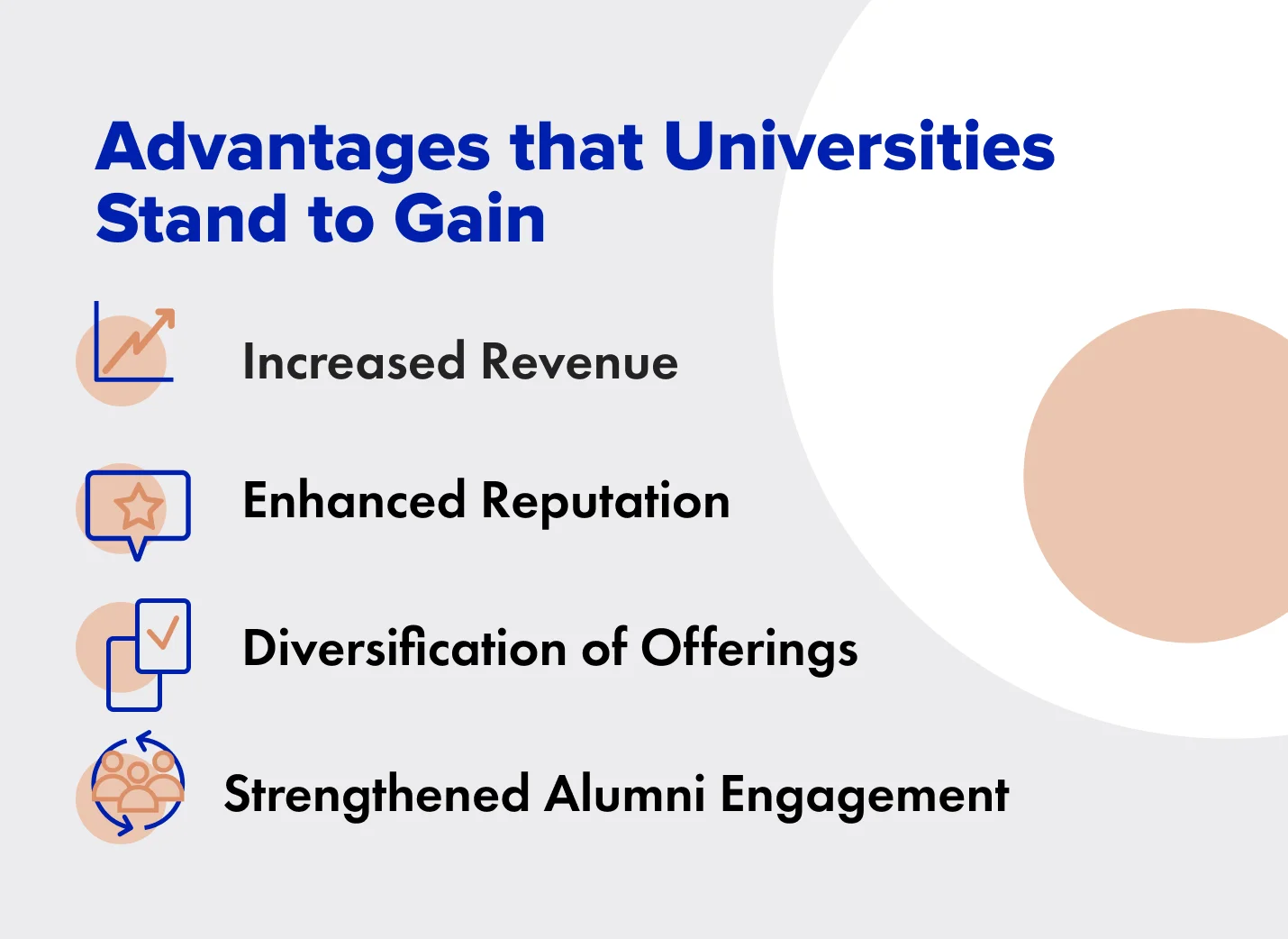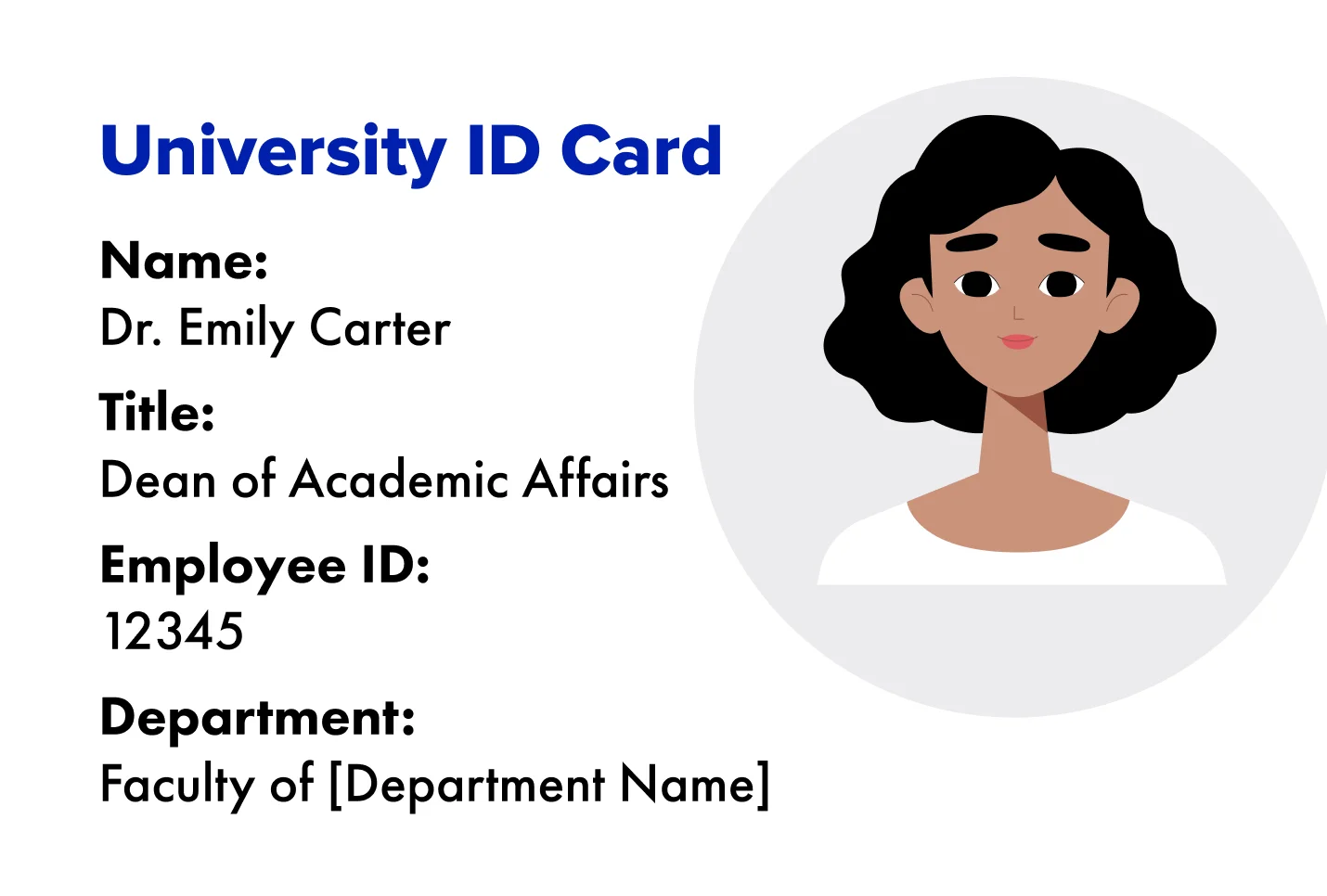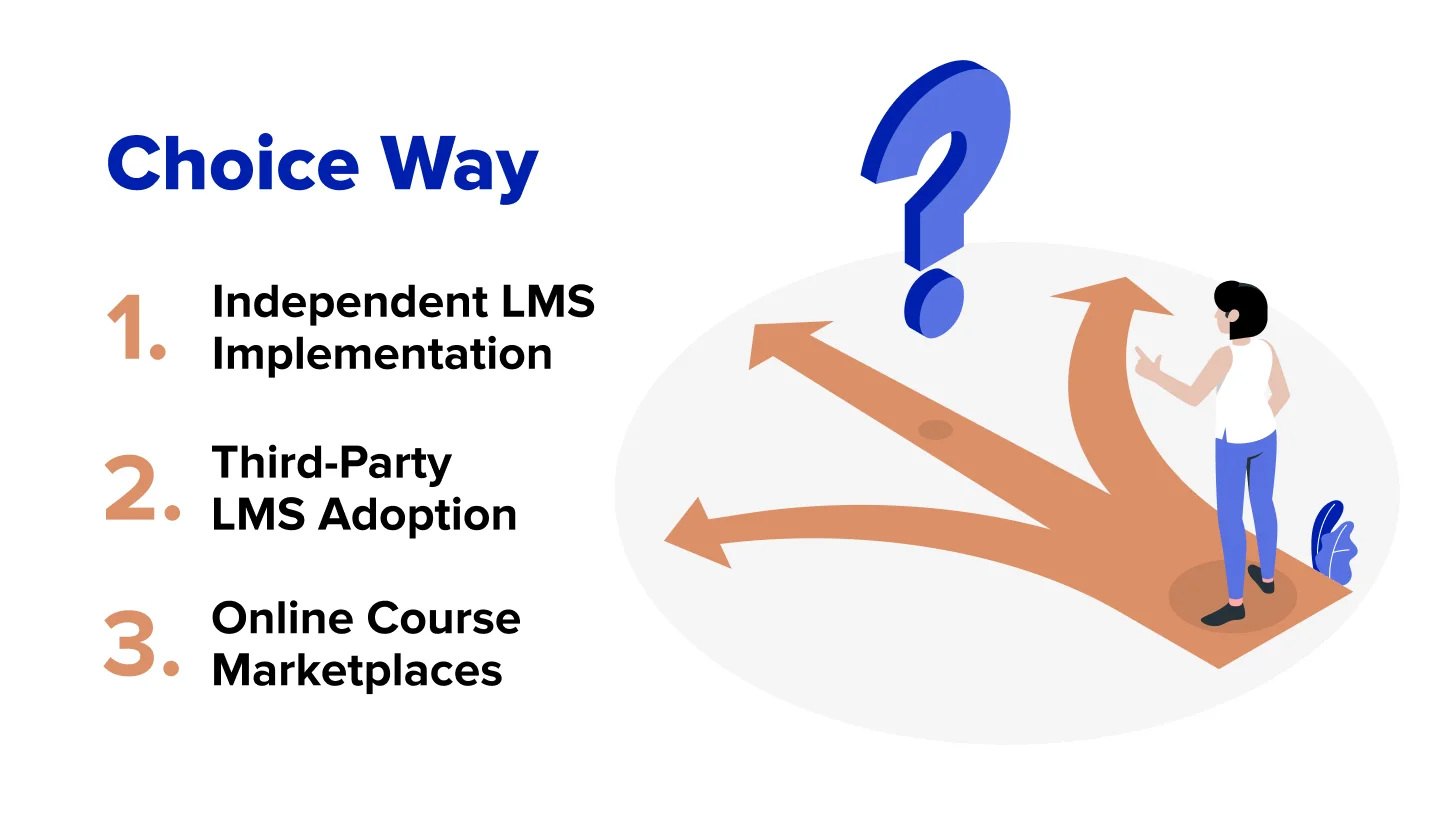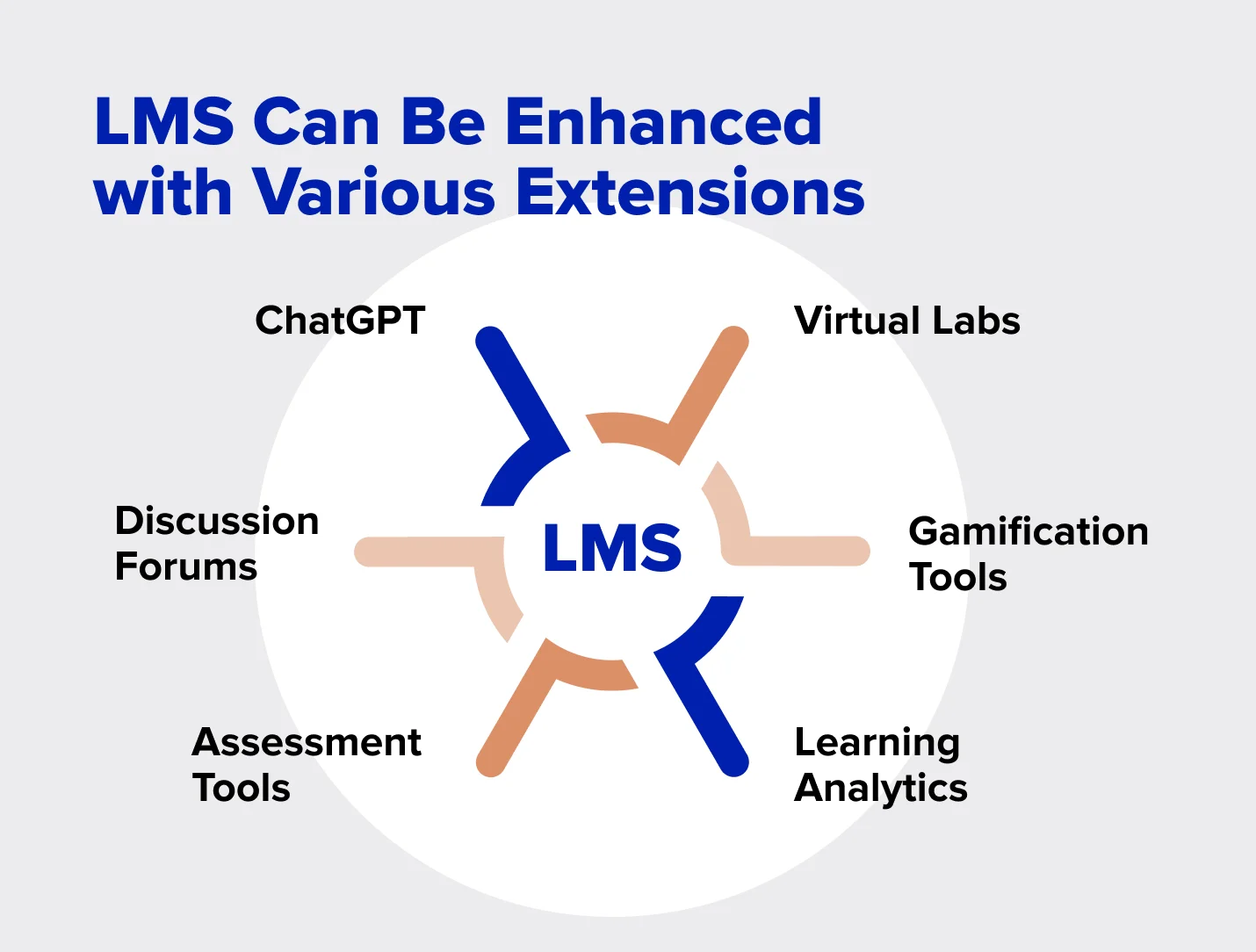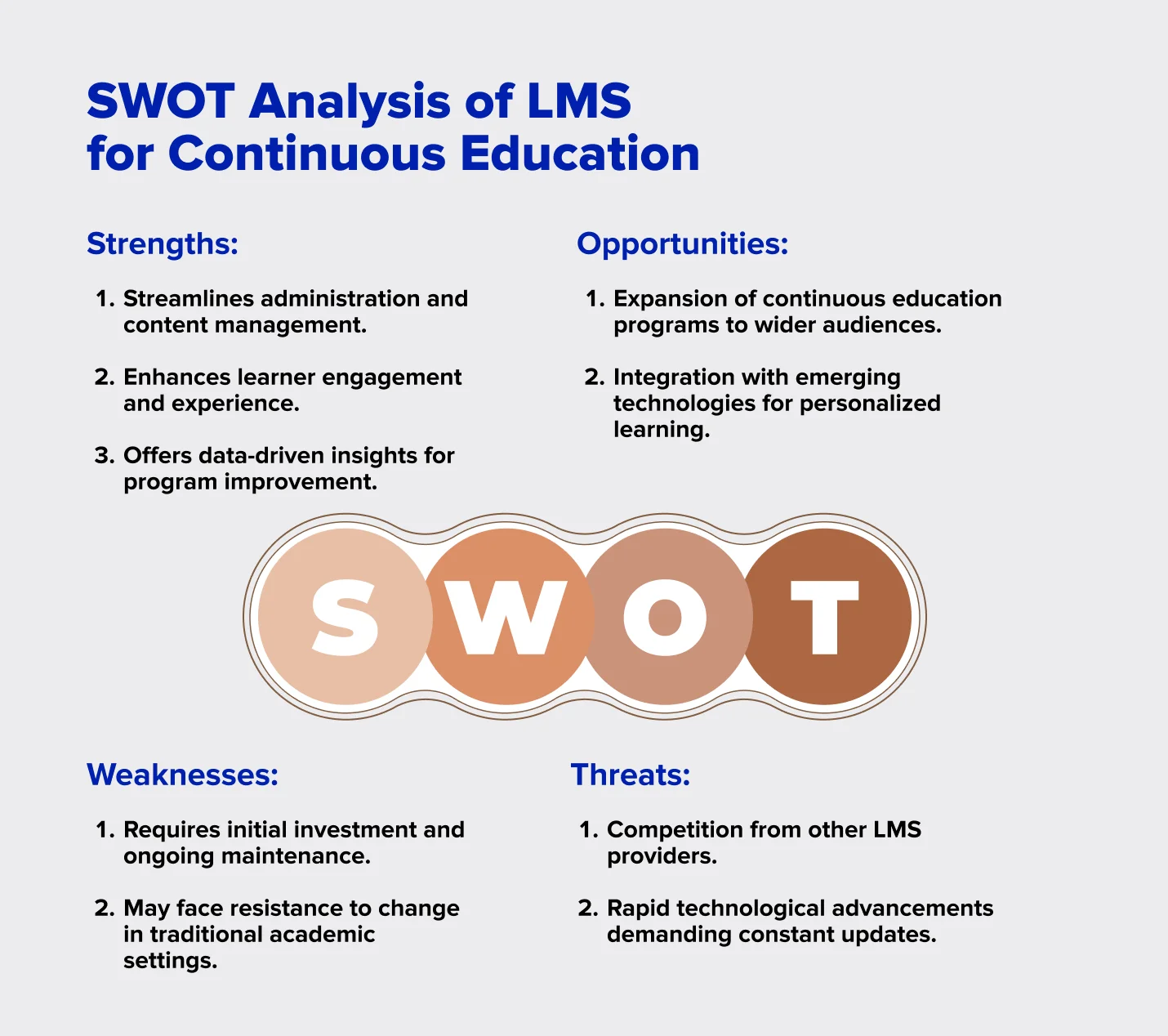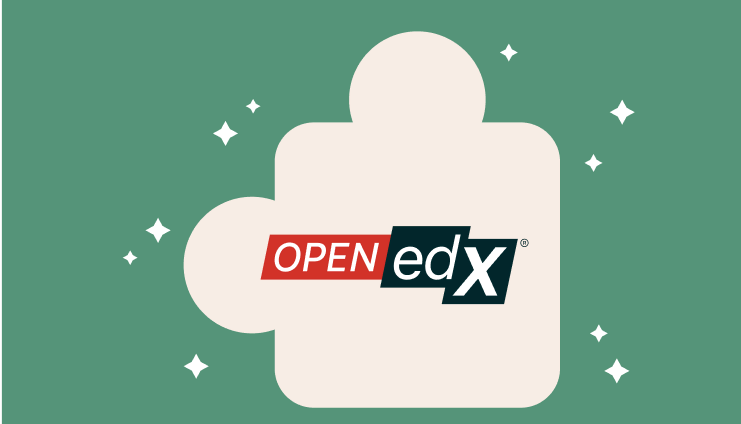The Meaning of Continuous Education for Universities
Continuous education goes beyond traditional academic structures, offering a lifeline for universities to stay relevant and thrive. It encompasses a spectrum of learning opportunities, from short courses to online degrees, catering to a diverse audience of lifelong learners. For universities, it’s a strategy to expand their horizons, reach new demographics, and tap into the ever-evolving educational market.
Advantages of Implementing Continuous Education
The decision to embrace continuous education can be transformational for universities. It’s not just a response to the demands of the digital age; it’s an investment in the future.
Here are some of the key advantages that universities stand to gain:
- Increased Revenue: Continuous education programs can be a valuable source of income for universities. Participants often pay tuition or fees to enroll, creating a steady revenue stream. By accommodating a broader range of learners, universities can tap into new markets, generating additional income.
- Enhanced Reputation: A commitment to continuous education enhances a university’s reputation. It demonstrates adaptability and a forward-thinking approach, making the institution more appealing to prospective students and partners.
- Diversification of Offerings: Through continuous education, universities can enrich their academic portfolio with specialized and up-to-date programs. This diversification not only attracts new learners but also keeps existing ones engaged.
- Strengthened Alumni Engagement: Offering continuous education opportunities to alumni fosters stronger connections. It’s a way to give back to graduates, keeping them engaged with the institution long after they’ve left the campus.
Illustrating Continuous Education Solution in Practice
Discover how our partnerships with various universities have led to tailored solutions that can fuel growth, enhance learner engagement, and pave the way for academic success. Take the next step by visiting our page on Continuous Education Solution for Universities.
Dr. Emily Carter’s Quest for the Perfect University Solution
Meet Dr. Emily Carter, the driving force behind academic excellence at her university. As the Dean of Academic Affairs, Dr. Carter’s role extends beyond administrative duties; she is a visionary educational leader passionate about advancing education. With a Ph.D. in Education and years of experience, she understands that the future of higher education lies in its ability to adapt to the ever-changing demands of learners and industries.
Aspirations for Continuing Education
Dr. Carter’s aspirations for her university are nothing short of transformational. She envisions a learning environment that embraces continuous education as a cornerstone of growth. Her mission is clear: to provide diverse, high-quality education programs that attract and engage lifelong learners, working professionals, and alumni.
Choosing the Right Path for Continuous Education
Dr. Emily Carter, our visionary academic leader, stands at a pivotal crossroads, confronted with the profound task of determining the optimal approach for introducing continuous education into her university. As her journey unfolds, it resonates with the experiences of countless other educators, each navigating their unique pathways toward this transformative goal. Together, we explore the very choices that weigh upon Dr. Carter, as she steers her university into the realm of continuous education. Let us now delve into the distinct options that command her attention.
Option #1: Independent LMS Implementation
Independent LMS creation offers universities complete control and customization over their learning platforms, resulting in tailored learning experiences, long-term cost savings, unique branding, and full ownership.
- High Customization: Developing a custom LMS allows the university to control the platform completely, enabling extensive customization to align precisely with the institution’s unique needs.
- Tailored Learning Experience: The university creates a highly tailored learning experience for students, enhancing engagement and satisfaction.
- Long-Term Cost Savings: While the initial investment is significant, the long-term cost savings come from avoiding recurring licensing fees associated with third-party LMS solutions.
- Unique Branding: The university establishes a unique brand identity for its continuous education programs, strengthening its reputation in the academic landscape.
- Full Ownership: The university retains full ownership and control over the platform’s features, ensuring it can adapt and evolve to meet changing needs.
Raccoon Gang’s Expert Opinion on Independent LMS Implementation:
“When evaluating LMS implementation options, it’s crucial to consider the potential risks and challenges. In the case of hasty independent LMS implementation, we’ve seen institutions face substantial budget strains due to unforeseen development costs. These projects often require more resources and time than initially anticipated, diverting attention from core academic endeavors. Our expertise suggests that a well-considered approach to customization and development is critical to avoiding these pitfalls and ensuring a successful continuous education initiative.”
Option #2: Third-Party LMS Adoption
Selecting a third-party LMS provides universities with a quick start, reduced development effort, vendor support, cost predictability, and access to many features.
- Quick Start: Adopting a third-party LMS enables the university to launch continuous education programs more rapidly than developing a custom solution.
- Reduced Development Effort: The university avoids the need for extensive software development and infrastructure setup, streamlining the implementation process.
- Vendor Support: Third-party LMS providers typically offer support, updates, and enhancements, reducing the burden on the university’s IT department.
- Cost Predictability: While recurring costs exist, the university benefits from cost predictability with clear licensing fees and potentially lower initial investment.
- Access to Features: Third-party LMS platforms often come with a range of features and tools that can enhance the learning experience without the need for in-house development.
Raccoon Gang’s Expert Opinion on Third-Party LMS Adoption:
“Now, consider a hypothetical university that hastily opted for a third-party Learning Management System (LMS) without thoroughly evaluating its long-term compatibility. Initial excitement over a quick setup swiftly turns into frustration as limitations in customization become evident. The university finds itself constrained by inflexible features and struggles to align the LMS with its unique educational goals. Over time, recurring licensing fees significantly strain the budget, diverting valuable resources from academic development. Additionally, dependence on the LMS vendor for support results in delays in addressing critical issues, ultimately leading to student dissatisfaction and a decline in enrollment.”
Option #3: Use of Online Course Marketplaces for Continuous Education
Partnering with online course marketplaces yields global reach, access to diverse learners, rapid expansion, reduced development costs, and marketing and promotion assistance.
- Global Reach: Partnering with online course marketplaces provides the university with immediate access to a worldwide audience of learners, expanding its reach significantly.
- Diverse Learners: The marketplace offers access to a diverse and international student body, enriching the learning experience with broader perspectives.
- Rapid Expansion: The university can quickly scale its continuous education programs without the need for extensive development, infrastructure, or marketing efforts.
- Reduced Development Costs: Compared to developing a full-fledged LMS, the university saves on development costs and can focus resources on course content.
- Marketing and Promotion: Online course marketplaces often handle marketing and promotion, easing the burden on the university to attract learners.
Raccoon Gang’s Expert Opinion on Online Course Marketplaces:
“Now, let’s envision a university eager to embrace continuous education, selecting the path of least resistance by impulsively partnering with an online course marketplace. While this option promises rapid expansion, the institution soon discovers the downsides of its impulsive decision. Limited control over branding and pricing gradually erodes the university’s unique identity, while revenue-sharing agreements begin to eat into profits. The absence of customization options severely hampers the ability to tailor courses to specific needs, resulting in a more varied learning experience. In its quest for quick growth, the university unwittingly sacrifices the quality and identity of its continuous education offerings.”
These benefits showcase the advantages universities can gain from each of the three options for implementing continuous education.
Choosing the Ideal LMS for Continuous Learning
Picture this: Emily Carter envisions a continuous education platform that seamlessly integrates with her university’s systems, offers a wealth of content possibilities, and fosters engagement among students. Dr. Carter’s vision of enhancing continuous education at her university aligns well with Option 1: Independent LMS Implementation.
Why Is Independent LMS Implementation the Best Choice for Dr. Carter?
- High Customization Needs: Dr. Carter seeks extensive customization to align the LMS precisely with her university’s unique needs.
- Long-Term Cost Control: While the initial investment for independent LMS implementation may be higher, it offers long-term cost control by avoiding recurring licensing fees, aligning with Dr. Carter’s budgetary considerations.
- Complete Control and Ownership: Independent LMS implementation ensures total control and ownership over the platform’s features, branding, and user experience.
When Content Alone is not Sufficient
When it comes to LMS for continuing education, Dr. Carter’s colleagues often say that the main thing is content, questioning the need for significant LMS investments. However, it’s essential to recognize that a suitable higher education LMS enhances the very essence of content delivery. It empowers universities with flexibility and a rich toolbox for content creation and delivery.
Institutions can experience content liberation rather than confinement with a robust LMS solution. The flexibility to utilize various content types, including text, video, interactive assessments, and simulations, ensures that continuous education programs remain engaging and adaptable to the diverse needs of modern learners.
Furthermore, the right LMS enhances student interaction, fostering dynamic discussions, collaboration through forums and group activities. It serves as an engagement hub, seamlessly connecting educators and learners. Integration capabilities are also crucial, with integration with AI-driven tools like GPT chat and virtual labs, enabling practical, hands-on learning experiences, enriching continuous education programs for real-world challenges.
Challenges Faced Without an LMS
The Crucial Role of the Right LMS Solution in Continuous Education
To realize her vision, Dr. Carter recognizes the critical importance of finding the right LMS solution. This solution must align with her university’s objectives and cater to the unique demands of continuous education. It should offer ease of implementation, intuitive user interfaces, customization options, and robust analytics. Such an LMS will not only streamline administrative processes but also enhance the overall learning experience for her diverse audience.
Let’s explore various LMS options, including Open edX, Moodle, and Canvas to help Dr. Carter make an informed decision for her university’s continuous education success.
Open edX
| Advantages: | Disadvantages: |
| Open-Source and Customizable: Open edX is open-source software, providing the flexibility for universities to customize the platform extensively to meet their specific needs. | Complex Setup: Implementing Open edX can be complex, requiring dedicated technical expertise and resources. |
| Robust Learning Tools: It offers a wide range of tools for content creation, including text, multimedia, and interactive assessments, making it suitable for diverse course types. | Maintenance and Updates: Universities must ensure ongoing maintenance, security updates, and feature enhancements, which may demand additional resources. |
| Community and Support: Open edX has a strong global community of developers and educators, ensuring continuous support, updates, and the availability of various extensions. |
Moodle
| Advantages: | Disadvantages: |
| Open Source: Moodle is open-source, allowing universities to customize the platform to their requirements. | Limited Out-of-the-Box Features: While it’s customizable, Moodle may require additional plugins or development to match the features of other LMSs. |
| Large Community: It has a large user community and extensive documentation, making it relatively easy to find support and resources. | User Interface: Some users find Moodle’s interface less intuitive compared to modern LMSs. |
| Updates and Maintenance: Universities are responsible for ongoing updates and maintenance, which can be resource-intensive. |
Canvas
| Advantages: | Disadvantages: |
| User-Friendly Interface: Canvas is known for its user-friendly and intuitive interface, reducing the learning curve for educators and students. | Lack of Extensive Customization: While Canvas is customizable, it may have limitations in meeting unique institutional needs without significant development. |
| Strong Mobile Support: It offers robust mobile support, allowing students to access course materials and engage in discussions from their devices. | Costs: Canvas is a commercial LMS, so it involves licensing fees, which can add up over time. |
| Dependence on Vendor: Institutions rely on the vendor for updates, support, and feature enhancements. |
Dr. Carter’s choice of independent LMS implementation, with options like Open edX or Moodle, best suits her university’s unique needs for customization, cost control, and full control over the learning platform. It aligns with her vision of transforming continuous education at her institution.
Why Open edX Excels for Continuous Education
Dr. Carter’s journey to discover the perfect LMS for her university led her to a pivotal decision: Open edX. This choice wasn’t arbitrary; it was based on the multitude of advantages that the Open edX platform offers, aligning perfectly with her vision of continuous education excellence.
Advantages of Choosing Open edX
- Flexibility and Customization. Open edX provides the flexibility needed to tailor the LMS to the university’s unique requirements. Dr. Carter can easily customize the platform’s look, feel, and functionality, ensuring it aligns perfectly with her institution’s branding and course content.
- Open edX Studio. One of the standout features of Open edX is the Studio tool, a powerful resource for designing and managing online training courses. With Open edX Studio, you gain control over your course structure, content creation, scheduling, grading policies, and course team management.
- Community Support. Open edX boasts a vibrant community that offers invaluable support. Engage in discussions on the forum and access Open edX Insights for valuable insights. Being part of this community provides the opportunity to interact with experienced members, attend webinars, stay updated on upcoming events, and benefit from insightful blog posts.
- Comprehensive Analytics with RG Analytics. The integration of RG Analytics, developed by Raccoon Gang, empowers Dr. Carter with insightful data on student performance, course effectiveness, and engagement metrics. These comprehensive analytics enable data-driven decision-making, ensuring continuous improvement in educational outcomes.
- Engagement and Motivation with RG Gamification. To foster student engagement and motivation, Dr. Carter can leverage RG Gamification, another valuable add-on by Raccoon Gang. Features like leaderboards, badges, and progress tracking create a dynamic and rewarding learning environment, keeping students motivated and actively participating.
- Mobile Accessibility. Raccoon Gang offers mobile applications for Open edX, ensuring students can access course materials and engage in discussions seamlessly from any device. This mobile compatibility is essential for accommodating diverse learning styles and schedules.
The Role of an Official Open edX Provider
In her pursuit of the ideal LMS, Dr. Carter recognized the importance of partnering with an official Open edX provider. Companies like Raccoon Gang offer invaluable expertise and services to educational institutions, facilitating the successful implementation of the Open edX platform. With their assistance, Dr. Carter’s vision of a tailored, efficient, and engaging continuous education platform becomes an attainable reality.
By choosing Open edX and leveraging the capabilities provided by an official provider like Raccoon Gang, Dr. Carter sets her university on a path to continuous education excellence.
Conclusion
As we conclude Dr. Emily Carter’s quest for the perfect Learning Management System (LMS), her journey serves as a guiding light for universities navigating the dynamic landscape of continuous education. Her vision and determination to elevate her institution’s learning experience led her to explore various paths, each with its own set of advantages and challenges.
In the end, Dr. Carter’s choice of independent LMS implementation, specifically utilizing the Open edX platform, prevailed. This decision was driven by the flexibility, customization options, and the additional benefits provided by Raccoon Gang’s RG Analytics and RG Gamification. The ability to tailor the platform to her university’s unique needs, coupled with the power of data-driven insights and engagement features, made Open edX the ideal choice.
Dr. Carter’s story isn’t just about her institution; it’s a testament to the importance of continuous education in today’s academic landscape. It’s a journey of embracing the future of learning and staying relevant in an ever-evolving world.
Ready to Transform Your University’s Continuous Education?
If Dr. Carter’s path resonates with your university’s ambitions, it’s time to take the next step. Contact Raccoon Gang today and embark on your own journey to enhance continuous education. Our expertise and the capabilities of Open edX can help you create a tailored, efficient, and engaging learning environment that empowers your institution and learners alike.
Don’t wait; the future of education is here. Book a call and start shaping it today! ☎️🚀
- The Meaning of Continuous Education for UniversitiesContinuous education goes beyond traditional academic structures, offering a lifeline for universities to stay relevant and thrive. It encompasses a spectrum of learning opportunities, from short courses to online degrees, catering to a diverse audience of lifelong learners. For universities, it's a strategy to expand their horizons, reach new demographics, and tap into the ever-evolving educational market. Advantages of Implementing Continuous Education The decision to embrace continuous education can be transformational for universities. It's not just a response to the demands of the digital age; it's an investment in the future. Here are some of the key advantages that universities stand to gain: Increased Revenue: Continuous education programs can be a valuable source of income for universities. Participants often pay tuition or fees to enroll, creating a steady revenue stream. By accommodating a broader range of learners, universities can tap into new markets, generating additional income. Enhanced Reputation: A commitment to continuous education enhances a university's reputation. It demonstrates adaptability and a forward-thinking approach, making the institution more appealing to prospective students and partners. Diversification of Offerings: Through continuous education, universities can enrich their academic portfolio with specialized and up-to-date programs. This diversification not only attracts new learners but also keeps existing ones engaged. Strengthened Alumni Engagement: Offering continuous education opportunities to alumni fosters stronger connections. It's a way to give back to graduates, keeping them engaged with the institution long after they've left the campus. Illustrating Continuous Education Solution in Practice Discover how our partnerships with various universities have led to tailored solutions that can fuel growth, enhance learner engagement, and pave the way for academic success. Take the next step by visiting our page on Continuous Education Solution for Universities. Dr. Emily Carter's Quest for the Perfect University SolutionMeet Dr. Emily Carter, the driving force behind academic excellence at her university. As the Dean of Academic Affairs, Dr. Carter's role extends beyond administrative duties; she is a visionary educational leader passionate about advancing education. With a Ph.D. in Education and years of experience, she understands that the future of higher education lies in its ability to adapt to the ever-changing demands of learners and industries.Aspirations for Continuing Education Dr. Carter's aspirations for her university are nothing short of transformational. She envisions a learning environment that embraces continuous education as a cornerstone of growth. Her mission is clear: to provide diverse, high-quality education programs that attract and engage lifelong learners, working professionals, and alumni. Choosing the Right Path for Continuous Education Dr. Emily Carter, our visionary academic leader, stands at a pivotal crossroads, confronted with the profound task of determining the optimal approach for introducing continuous education into her university. As her journey unfolds, it resonates with the experiences of countless other educators, each navigating their unique pathways toward this transformative goal. Together, we explore the very choices that weigh upon Dr. Carter, as she steers her university into the realm of continuous education. Let us now delve into the distinct options that command her attention. Option #1: Independent LMS Implementation Independent LMS creation offers universities complete control and customization over their learning platforms, resulting in tailored learning experiences, long-term cost savings, unique branding, and full ownership. High Customization: Developing a custom LMS allows the university to control the platform completely, enabling extensive customization to align precisely with the institution's unique needs. Tailored Learning Experience: The university creates a highly tailored learning experience for students, enhancing engagement and satisfaction. Long-Term Cost Savings: While the initial investment is significant, the long-term cost savings come from avoiding recurring licensing fees associated with third-party LMS solutions. Unique Branding: The university establishes a unique brand identity for its continuous education programs, strengthening its reputation in the academic landscape. Full Ownership: The university retains full ownership and control over the platform's features, ensuring it can adapt and evolve to meet changing needs. Raccoon Gang's Expert Opinion on Independent LMS Implementation:"When evaluating LMS implementation options, it's crucial to consider the potential risks and challenges. In the case of hasty independent LMS implementation, we've seen institutions face substantial budget strains due to unforeseen development costs. These projects often require more resources and time than initially anticipated, diverting attention from core academic endeavors. Our expertise suggests that a well-considered approach to customization and development is critical to avoiding these pitfalls and ensuring a successful continuous education initiative."Option #2: Third-Party LMS Adoption Selecting a third-party LMS provides universities with a quick start, reduced development effort, vendor support, cost predictability, and access to many features. Quick Start: Adopting a third-party LMS enables the university to launch continuous education programs more rapidly than developing a custom solution. Reduced Development Effort: The university avoids the need for extensive software development and infrastructure setup, streamlining the implementation process. Vendor Support: Third-party LMS providers typically offer support, updates, and enhancements, reducing the burden on the university's IT department. Cost Predictability: While recurring costs exist, the university benefits from cost predictability with clear licensing fees and potentially lower initial investment. Access to Features: Third-party LMS platforms often come with a range of features and tools that can enhance the learning experience without the need for in-house development. Raccoon Gang's Expert Opinion on Third-Party LMS Adoption:"Now, consider a hypothetical university that hastily opted for a third-party Learning Management System (LMS) without thoroughly evaluating its long-term compatibility. Initial excitement over a quick setup swiftly turns into frustration as limitations in customization become evident. The university finds itself constrained by inflexible features and struggles to align the LMS with its unique educational goals. Over time, recurring licensing fees significantly strain the budget, diverting valuable resources from academic development. Additionally, dependence on the LMS vendor for support results in delays in addressing critical issues, ultimately leading to student dissatisfaction and a decline in enrollment."Option #3: Use of Online Course Marketplaces for Continuous Education Partnering with online course marketplaces yields global reach, access to diverse learners, rapid expansion, reduced development costs, and marketing and promotion assistance. Global Reach: Partnering with online course marketplaces provides the university with immediate access to a worldwide audience of learners, expanding its reach significantly. Diverse Learners: The marketplace offers access to a diverse and international student body, enriching the learning experience with broader perspectives. Rapid Expansion: The university can quickly scale its continuous education programs without the need for extensive development, infrastructure, or marketing efforts. Reduced Development Costs: Compared to developing a full-fledged LMS, the university saves on development costs and can focus resources on course content. Marketing and Promotion: Online course marketplaces often handle marketing and promotion, easing the burden on the university to attract learners. Raccoon Gang's Expert Opinion on Online Course Marketplaces:"Now, let's envision a university eager to embrace continuous education, selecting the path of least resistance by impulsively partnering with an online course marketplace. While this option promises rapid expansion, the institution soon discovers the downsides of its impulsive decision. Limited control over branding and pricing gradually erodes the university's unique identity, while revenue-sharing agreements begin to eat into profits. The absence of customization options severely hampers the ability to tailor courses to specific needs, resulting in a more varied learning experience. In its quest for quick growth, the university unwittingly sacrifices the quality and identity of its continuous education offerings." These benefits showcase the advantages universities can gain from each of the three options for implementing continuous education. Choosing the Ideal LMS for Continuous LearningPicture this: Emily Carter envisions a continuous education platform that seamlessly integrates with her university's systems, offers a wealth of content possibilities, and fosters engagement among students. Dr. Carter's vision of enhancing continuous education at her university aligns well with Option 1: Independent LMS Implementation. Why Is Independent LMS Implementation the Best Choice for Dr. Carter? High Customization Needs: Dr. Carter seeks extensive customization to align the LMS precisely with her university's unique needs. Long-Term Cost Control: While the initial investment for independent LMS implementation may be higher, it offers long-term cost control by avoiding recurring licensing fees, aligning with Dr. Carter's budgetary considerations. Complete Control and Ownership: Independent LMS implementation ensures total control and ownership over the platform's features, branding, and user experience. When Content Alone is not Sufficient When it comes to LMS for continuing education, Dr. Carter's colleagues often say that the main thing is content, questioning the need for significant LMS investments. However, it’s essential to recognize that a suitable higher education LMS enhances the very essence of content delivery. It empowers universities with flexibility and a rich toolbox for content creation and delivery. Institutions can experience content liberation rather than confinement with a robust LMS solution. The flexibility to utilize various content types, including text, video, interactive assessments, and simulations, ensures that continuous education programs remain engaging and adaptable to the diverse needs of modern learners. Furthermore, the right LMS enhances student interaction, fostering dynamic discussions, collaboration through forums and group activities. It serves as an engagement hub, seamlessly connecting educators and learners. Integration capabilities are also crucial, with integration with AI-driven tools like GPT chat and virtual labs, enabling practical, hands-on learning experiences, enriching continuous education programs for real-world challenges. Challenges Faced Without an LMSThe Crucial Role of the Right LMS Solution in Continuous Education To realize her vision, Dr. Carter recognizes the critical importance of finding the right LMS solution. This solution must align with her university's objectives and cater to the unique demands of continuous education. It should offer ease of implementation, intuitive user interfaces, customization options, and robust analytics. Such an LMS will not only streamline administrative processes but also enhance the overall learning experience for her diverse audience. Let’s explore various LMS options, including Open edX, Moodle, and Canvas to help Dr. Carter make an informed decision for her university's continuous education success. Open edX Advantages: Disadvantages: Open-Source and Customizable: Open edX is open-source software, providing the flexibility for universities to customize the platform extensively to meet their specific needs. Complex Setup: Implementing Open edX can be complex, requiring dedicated technical expertise and resources. Robust Learning Tools: It offers a wide range of tools for content creation, including text, multimedia, and interactive assessments, making it suitable for diverse course types. Maintenance and Updates: Universities must ensure ongoing maintenance, security updates, and feature enhancements, which may demand additional resources. Community and Support: Open edX has a strong global community of developers and educators, ensuring continuous support, updates, and the availability of various extensions. Moodle Advantages: Disadvantages: Open Source: Moodle is open-source, allowing universities to customize the platform to their requirements. Limited Out-of-the-Box Features: While it's customizable, Moodle may require additional plugins or development to match the features of other LMSs. Large Community: It has a large user community and extensive documentation, making it relatively easy to find support and resources. User Interface: Some users find Moodle's interface less intuitive compared to modern LMSs. Updates and Maintenance: Universities are responsible for ongoing updates and maintenance, which can be resource-intensive. Canvas Advantages: Disadvantages: User-Friendly Interface: Canvas is known for its user-friendly and intuitive interface, reducing the learning curve for educators and students. Lack of Extensive Customization: While Canvas is customizable, it may have limitations in meeting unique institutional needs without significant development. Strong Mobile Support: It offers robust mobile support, allowing students to access course materials and engage in discussions from their devices. Costs: Canvas is a commercial LMS, so it involves licensing fees, which can add up over time. Dependence on Vendor: Institutions rely on the vendor for updates, support, and feature enhancements. Dr. Carter's choice of independent LMS implementation, with options like Open edX or Moodle, best suits her university's unique needs for customization, cost control, and full control over the learning platform. It aligns with her vision of transforming continuous education at her institution. Why Open edX Excels for Continuous Education Dr. Carter's journey to discover the perfect LMS for her university led her to a pivotal decision: Open edX. This choice wasn't arbitrary; it was based on the multitude of advantages that the Open edX platform offers, aligning perfectly with her vision of continuous education excellence. Advantages of Choosing Open edX Flexibility and Customization. Open edX provides the flexibility needed to tailor the LMS to the university's unique requirements. Dr. Carter can easily customize the platform's look, feel, and functionality, ensuring it aligns perfectly with her institution's branding and course content. Open edX Studio. One of the standout features of Open edX is the Studio tool, a powerful resource for designing and managing online training courses. With Open edX Studio, you gain control over your course structure, content creation, scheduling, grading policies, and course team management. Community Support. Open edX boasts a vibrant community that offers invaluable support. Engage in discussions on the forum and access Open edX Insights for valuable insights. Being part of this community provides the opportunity to interact with experienced members, attend webinars, stay updated on upcoming events, and benefit from insightful blog posts. Comprehensive Analytics with RG Analytics. The integration of RG Analytics, developed by Raccoon Gang, empowers Dr. Carter with insightful data on student performance, course effectiveness, and engagement metrics. These comprehensive analytics enable data-driven decision-making, ensuring continuous improvement in educational outcomes. Engagement and Motivation with RG Gamification. To foster student engagement and motivation, Dr. Carter can leverage RG Gamification, another valuable add-on by Raccoon Gang. Features like leaderboards, badges, and progress tracking create a dynamic and rewarding learning environment, keeping students motivated and actively participating. Mobile Accessibility. Raccoon Gang offers mobile applications for Open edX, ensuring students can access course materials and engage in discussions seamlessly from any device. This mobile compatibility is essential for accommodating diverse learning styles and schedules. The Role of an Official Open edX Provider In her pursuit of the ideal LMS, Dr. Carter recognized the importance of partnering with an official Open edX provider. Companies like Raccoon Gang offer invaluable expertise and services to educational institutions, facilitating the successful implementation of the Open edX platform. With their assistance, Dr. Carter's vision of a tailored, efficient, and engaging continuous education platform becomes an attainable reality. By choosing Open edX and leveraging the capabilities provided by an official provider like Raccoon Gang, Dr. Carter sets her university on a path to continuous education excellence. ConclusionAs we conclude Dr. Emily Carter's quest for the perfect Learning Management System (LMS), her journey serves as a guiding light for universities navigating the dynamic landscape of continuous education. Her vision and determination to elevate her institution's learning experience led her to explore various paths, each with its own set of advantages and challenges. In the end, Dr. Carter's choice of independent LMS implementation, specifically utilizing the Open edX platform, prevailed. This decision was driven by the flexibility, customization options, and the additional benefits provided by Raccoon Gang's RG Analytics and RG Gamification. The ability to tailor the platform to her university's unique needs, coupled with the power of data-driven insights and engagement features, made Open edX the ideal choice. Dr. Carter's story isn't just about her institution; it's a testament to the importance of continuous education in today's academic landscape. It's a journey of embracing the future of learning and staying relevant in an ever-evolving world. Ready to Transform Your University's Continuous Education? If Dr. Carter's path resonates with your university's ambitions, it's time to take the next step. Contact Raccoon Gang today and embark on your own journey to enhance continuous education. Our expertise and the capabilities of Open edX can help you create a tailored, efficient, and engaging learning environment that empowers your institution and learners alike. Don't wait; the future of education is here. Book a call and start shaping it today! ☎️🚀
- Dr. Emily Carter's Quest for the Perfect University Solution
- Choosing the Ideal LMS for Continuous Learning
- Why Open edX Excels for Continuous Education
- Conclusion

